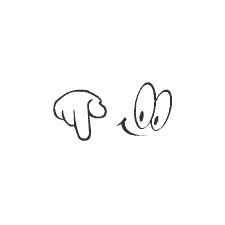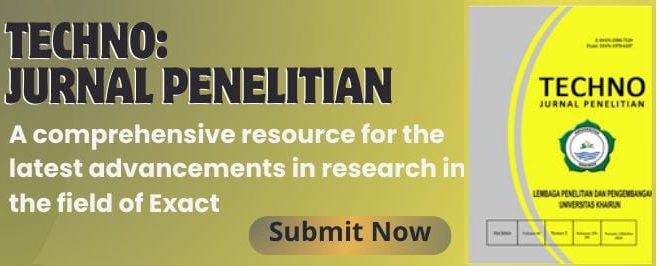Effect of Chitosan on Chlorophyll Content and Phytotoxicity in Brassica Juncea L.
Abstract
The positive impact of chitosan has been widespread and has attracted interest from farmers with the pretext that it is safe for the environment. However, information on the adverse effects of using chitosan on plants still needs to be available. This study aims to discover the side effects of applying chitosan on the Brassica juncea. This test is done using Complete Random Design (CRD). The test is carried out by applying a solution of chitosan with five series of concentrations (0.5%, 1.5%, 2.5%, 3.5%, and 4.5%) plus control of acetic acid 1% (AA) to the upper and lower surfaces of the B. juncea leaves (old and young leaves) using a brush smooth to drip wet. The trial was repeated four times. Data was analyzed using ANOVA (Analisis of Variance). When there is a significant difference between the treatments, further tests are conducted using DMRT at a substantial level of 5%. In two week and three week B. juncea plant, the highest chlorophyll content is observed in the chitosan with a concentration of 3.5% and 0.5% with the same value of 0.74 mg/g, while the lowest concentration is at 1.5% 0.61 mg/g at the age of two weeks and 0.50 mg/g at three weeks. Using chitosan at high concentrations (2.5-4.5%) indicates phytotoxic occurrence in the leaves of two week or three week old B. juncea plants. Phytoxic indications are seen in rolling leaves, thickening, and structurally more hardinge when compared with low concentration (0.5% and 1.5%) and control treatments. It is best to pay attention to the use of concentrations of chitosan so that plants get optimal positive effects without causing adverse side effects.
Keywords
Full Text:
PDFReferences
Asgari-Targhi, G., Iranbakhsh, A., & Ardebili, Z. O. (2018). Potential Benefits and Phytotoxicity Of Bulk And Nano-Chitosan On The Growth, Morphogenesis, Physiology, And Micropropagation Of Capsicum Annuum. Plant Physiology and Biochemistry, 127, 393–402. https://doi.org/10.1016/j.plaphy.2018.04.013
Barrera-Necha, L. L., Correa-Pacheco, Z. N., Bautista-Baños, S., Hernández-López, M., Jiménez, J. E. M., & MejÃa, A. F. M. (2018). Synthesis and Characterization of Chitosan Nanoparticles Loaded Botanical Extracts with Antifungal Activity on Colletotrichum Gloeosporioides and Alternaria Species. Advances in Microbiology, 8(04), 286–296. https://doi.org/10.4236/AIM.2018.84019
Brunel, F., El Gueddari, N. E., & Moerschbacher, B. M. (2013). Complexation of Copper(II) with Chitosan Nanogels: Toward Control of Microbial Growth. Carbohydrate Polymers, 92(2), 1348–1356. https://doi.org/10.1016/J.CARBPOL.2012.10.025
Eddleston, M., Karalliedde, L., Buckley, N., Fernando, R., Hutchinson, G., Isbister, G., Konradsen, F., Murray, D., Piola, J. C., Senanayake, N., Sheriff, R., Singh, S., Siwach, S. B., & Smit, L. (2002). Pesticide Poisoning in The Developing World: A Minimum Pesticide List. The Lancet, 360, 1163-1167. https://cgspace.cgiar.org/handle/10568/41246
El Amerany, F., Rhazi, M., Balcke, G., Wahbi, S., Meddich, A., Taourirte, M., & Hause, B. (2022). The Effect of Chitosan on Plant Physiology, Wound Response, and Fruit Quality of Tomato. Polymers, 14(22). https://doi.org/10.3390/polym14225006
El Hadrami, A., Adam, L. R., El Hadrami, I., & Daayf, F. (2010). Chitosan in Plant Protection. Marine Drugs 2010, Vol. 8, Pages 968-987, 8(4), 968–987. https://doi.org/10.3390/MD8040968
Jeyaratnam. (1990). Acute Pesticide Poisoning: A Major Global Health Problem. World Health Statistics Organization: Geneva, Switzerland, 43, 139–144.
Kaur, P., Duhan, J. S., & Thakur, R. (2018). Comparative Pot Studies of Chitosan and Chitosan-Metal Nanocomposites as Nano-Agrochemicals Against Fusarium Wilt of Chickpea (Cicer arietinum L.). Biocatalysis and Agricultural Biotechnology, 14, 466–471. https://doi.org/10.1016/J.BCAB.2018.04.014
Khati, P., Chaudhary, P., Gangola, S., Bhatt, P., & Sharma, A. (2017). Nanochitosan Supports Growth of Zea Mays and Also Maintains Soil Health Following Growth. 3 Biotech, 7(1). https://doi.org/10.1007/S13205-017-0668-Y
Kheiri, A., Moosawi Jorf, S. A., Malihipour, A., Saremi, H., & Nikkhah, M. (2017). Synthesis and Characterization of Chitosan Nanoparticles and Their Effect on Fusarium Head Blight and Oxidative Activity in Wheat. International Journal of Biological Macromolecules, 102, 526–538. https://doi.org/10.1016/J.IJBIOMAC.2017.04.034
Kheiri, A., Moosawi Jorf, S. A., Mallihipour, A., Saremi, H., & Nikkhah, M. (2016). Application of Chitosan and Chitosan Nanoparticles for The Control of Fusarium Head Blight of Wheat (Fusarium Graminearum) in Vitro and Greenhouse. International Journal of Biological Macromolecules, 93(Pt A), 1261–1272. https://doi.org/10.1016/J.IJBIOMAC.2016.09.072
Lichtenthaler, Y. H. K., & Buschmann, C. (2001). Chlorophylls and Carotenoids: Measurement and Characterization by UV-VIS Spectroscopy. Current Protocols in Food Analytical Chemistry by John Wiley & Sons, Inc. https://sci-hub.se/https://doi.org/10.1002/0471142913.faf0403s01
Maluin, F. N., & Hussein, M. Z. (2020). Chitosan-based Agronanochemicals as a Sustainable Alternative in Crop Protection. In Molecules (Vol. 25, Issue 7). MDPI AG. https://doi.org/10.3390/molecules25071611
Meyers, S. P., & Bligh, D. (1981). Characterization of Astaxanthin Pigments from Heat-Processed Crawfish Waste. Journal of Agricultural and Food Chemistry, 29(3), 505–508. https://doi.org/10.1021/JF00105A017
Moolphuerk, N., & Pattanagul, W. (2020). Pretreatment with Different Molecular Weight Chitosans Encourages Drought Tolerance in Rice (Oryza Sativa L.) Seedling. Notulae Botanicae Horti Agrobotanici Cluj-Napoca, 48(4), 2072–2084. https://www.notulaebotanicae.ro/index.php/nbha/article/view/12018/9045
Ningsih, S., Putra, N. S., & Trisyono, Y. A. (2020). Feeding Inhibition by Chitosan on Larvae of Spodoptera litura (Lepidoptera: Noctuidae). Jurnal Perlindungan Tanaman Indonesia, 24(2), 182. https://doi.org/10.22146/jpti.44032
Pérez-Millán, R., Cámara-Zapata, J. M., Fernández-Zapata, J. C., Simón-Grao, S., Alfosea-Simón, M., Zavala-González, E. A., Shahid, M. A., & GarcÃa-Sánchez, F. (2022). Application of Biocat G, Selenium, and Chitosan to Counteract the Negative Effects of Cd in Broccoli Plants Grown in Soilless Culture. Agronomy, 12(6). https://doi.org/10.3390/agronomy12061327
Popp, J., Pető, K., & Nagy, J. (2013). Pesticide Productivity and Food Security. A Review. Agron. Sustain. Dev, 33, 243–255. https://doi.org/10.1007/s13593-012-0105-x
Sahab, A., Waly, A., Sabbour, M., & Nawar, L. S. (2015). Synthesis, Antifungal and Insecticidal Potential of Chitosan (CS)-G-Poly (Acrylic Acid) (PAA) Nanoparticles Against Some Seed Borne Fungi and Insects of Soybean. Int.J. ChemTech Res, 8(2), 589–598. https://www.researchgate.net/publication/281738061_Synthesis_antifungal_and_insecticidal_potential_of_chitosan_CS-g-poly_acrylic_acid_PAA_nanoparticles_against_some_seed_borne_fungi_and_insects_of_soybean
Shangguan, Z. P., Shao, M. A., & Dyckmans, J. (2000). Nitrogen Nutrition and Water Stress Effects on Leaf Photosynthetic Gas Exchange and Water Use Efficiency in Winter Wheat. Environmental and Experimental Botany, 44(2), 141–149. https://doi.org/10.1016/S0098-8472(00)00064-2
Sunarka, I. K., Rai, I. N., & Kartini, D. N. L. (2015). Pengaruh Konsentrasi Antitranspiran Chitosan Terhadap Pembuahan dan Produksi Salak Gula Pasir di Luar Musim. Agrotrop, 5(1), 30–36.
Xu, C., & Mou, B. (2018). Chitosan as Soil Amendment Affects Lettuce Growth, Photochemical Efficiency, and Gas Exchange. Hort Technology, 28(4), 476–480. https://doi.org/10.21273/HORTTECH04032-18
Zayed, M. M., Elkafafi, S. H., Zedan, A. M. G., & Dawoud, S. F. M. (2017). Effect of Nano Chitosan on Growth, Physiological and Biochemical Parameters of Phaseolus vulgaris under Salt Stress. Journal of Plant Production, 8(5), 577–585. https://doi.org/10.21608/JPP.2017.40468
DOI: https://doi.org/10.33387/tjp.v12i2.6639
Refbacks
- There are currently no refbacks.
Copyright (c) 2023 Sulistia Ningsih, Dahlia Wulan Sari

This work is licensed under a Creative Commons Attribution-NonCommercial 4.0 International License.
-------------------------------------------------------------------------------------------------------------------------------------------------------------------
-------------------------------------------------------------------------------------------------------------------------------------------------------------------
TECHNO: Jurnal Penelitian
Published by: LPPM Universitas Khairun
Addres : Jalan Yusuf Abdurrahman Kampus II Unkhair, Kelurahan Gambesi, 97722 Kecamatan Kota Ternate Selatan, Provinsi Maluku Utara, Email: techno@unkhair.ac.id | URL: http://ejournal.unkhair.ac.id/index.php/Techno
Techno Jurnal Penelitian is licensed under a Creative Commons Attribution-NonCommercial 4.0 International License.


























